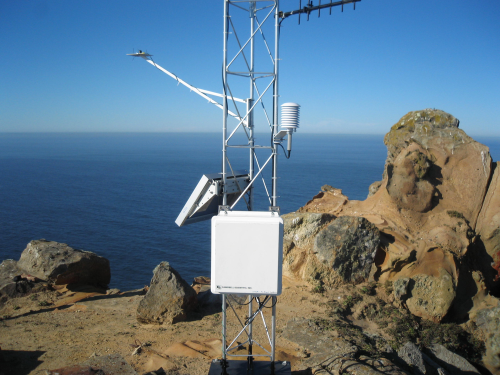
Overview
Customizing a weather station to match your weather monitoring needs is an ideal use of Campbell Scientific equipment. We offer the individual components required to build a weather station, with multiple offerings to allow you to choose the degree of accuracy required for your weather station application. Whether this is your first weather station installation, or you manage a weather network, our staff can help you select the correct component for your station from the tripod or tower mounting structure to calculating a power budget. We understand that researchers in Antarctica have different needs than wind profilers in Wyoming or trans-oceanographic vessels. But don't take our word for it--visit our Solutions pages to see how our customers have used our equipment, and use the links we've provided to visit the dedicated sections within our web site.
Specifications
For detailed specifications, see individual product pages. The components of a weather station are:
- Tripod or Tower - provides a sturdy mounting platform
- Datalogger - controls the system
- Sensors - measure the parameters you need
- Software - enables you to set up your system
- Data storage - extends the memory of your datalogger
- Data retrieval - peripherals reduce site visits
- Peripherals - extend the functionality of the datalogger
- Power Supply - powers the system
Features
- Choose either a tower or a tripod for your mounting structure. We offer multiple heights for both instrumentation towers and tripods.
- Select only the sensors that you need, such as wind speed, soil moisture, or a rain gauge. Some applications may have all of one sensor, such as wind speed and wind direction.
- Choose a datalogger based on your sensor selection (how many channels) and type of sensors (what type of voltage they require).
- Data retrieval methods can be determined by how often you need to retrieve your data, and the location of the station. Building a custom station allow you to select the way you want to communicate with it, either through cellular technology, satellite technology, some form of radio communication, or a combination.
- The power requirements for your weather station are determined by your sensor, datalogger, and data retrieval selections. We can help you calculate a power budget, based on your system, and select the appropriate type and size of power needed.
Images

Specifications
For detailed specifications, see individual product pages. The components of a weather station are the following:
- Tripod or Tower - provides a sturdy mounting platform
- Datalogger - controls the system
- Sensors - measure the parameters you need
- Software - enables you to set up your system
- Data storage - extends the memory of your datalogger
- Data retrieval - peripherals reduce site visits
- Peripherals - extend the functionality of the datalogger
- Power Supply - powers the system
Case Studies
When Salt Lake City opens its doors to the world for the 2002 Winter Olympic......read more
North Dakota agriculture ranks high in the nation’s crop production: No. 1 in durum and......read more
The Long-Term Ecological Research (LTER) program, sponsored by the National Science Foundation, monitors ecological phenomena......read more
Weather stations aboard buoys in the Atlantic Ocean, west of Ireland, provide the UK Met......read more



